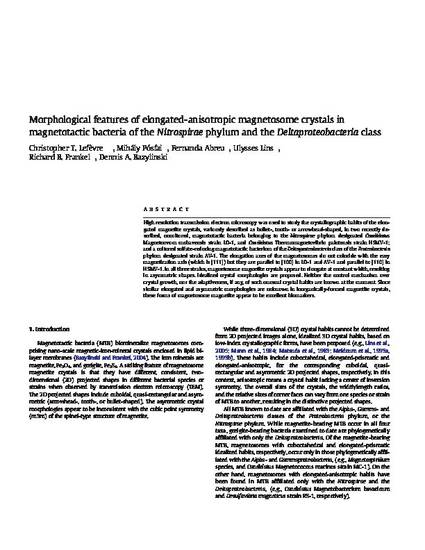
High resolution transmission electron microscopy was used to study the crystallographic habits of the elongated magnetite crystals, variously described as bullet-, tooth- or arrowhead-shaped, in two recently described, uncultured, magnetotactic bacteria belonging to the Nitrospirae phylum designated Candidatus Magnetoovum mohavensis strain LO-1, and Candidatus Thermomagnetovibrio paiutensis strain HSMV-1; and a cultured sulfate-reducing magnetotactic bacterium of the Deltaproteobacteria class of the Proteobacteria phylum designated strain AV-1. The elongation axes of the magnetosomes do not coincide with the easy magnetization axis (which is [111]) but they are parallel to [100] in LO-1 and AV-1 and parallel to [110] in HSMV-1. In all three strains, magnetosome magnetite crystals appear to elongate at constant width, resulting in asymmetric shapes. Idealized crystal morphologies are proposed. Neither the control mechanism over crystal growth, nor the adaptiveness, if any, of such unusual crystal habits are known at the moment. Since similar elongated and asymmetric morphologies are unknown in inorganically-formed magnetite crystals, these forms of magnetosome magnetite appear to be excellent biomarkers.
Available at: http://works.bepress.com/rfrankel/182/
